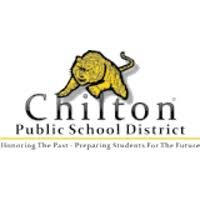The Restoration of Stony Brook-A Cold-Water Stream in Calumet County
The Lakeshore Natural Resource Partnership (LNRP) is proud to be leading a collaborative conservation success story with a team of partners in our mission-service area, this time one that will lead to sustainable inland stream trout populations – and public access to fish them!
Stony Brook is a clear, hard water stream located in Calumet County and lies within the headwaters of Manitowoc River watershed that eventually flows into Lake Michigan. Stony Brook was stocked with brown trout annually from 1973-1994, with additional stocking in 1998 and 1999. However, stocking efforts were halted due to a lack of return of stocked fish. Habitat loss and degradation over time, including sedimentation and channelization, are thought to be the main factors limiting trout survival.
Since 2015, Chilton School District (CSD), Fox Valley Trout Unlimited (FVTU), Wisconsin DNR (WDNR), Calumet County Land and Water Conservation Department (CCLWCD), and local landowners have explored potential for reviving the trout fishery. Students have raised trout in aquariums, assessed habitat conditions, and released them in Stony Brook through the Trout In a Classroom (TIC) program since 2016. A student from this first class motivated their family to become the first landowner to allow access with an easement for fish planting and stream improvements.
The establishment of the TIC program by the Fox Valley Trout Unlimited and funded by the Chilton Area Community Foundation has initiated a domino effect of action in the watershed. Recently obtained conservation easements allow FVTU, WDNR, and partners to perform habitat improvement projects. LNRP secured funding for a Phase One Restoration from the Fund for Lake Michigan in 2019, with work beginning in the spring of 2020 that included culvert replacement and “lunker structure” installation. The lunker structures provides habitat for fish and the macroinvertebrates that they feed on. We will conclude Phase One restoration work with additional habitat improvements later this spring. Tracy Bartels, the Chilton High School science teacher in charge of the Trout in the Classroom initiative, shared this video: https://www.youtube.com/watch?v=eKS0hh_yKHQ&feature=youtu.be
With the success of Phase One, our team began seeking funding to start up a “Friends of Stony Brook” group. With many partners involved, a more formalized structure was needed to continue the effort's momentum. Creating this structure is key to drafting a well-organized restoration plan, providing increased public fishing access, guiding local decision making, and generating additional support from the local community and beyond.
Thanks to a recently secured Wisconsin Department of Natural Resources Surface Water Education Grant, LNRP will help launch the new watershed group, Friends of Stony Brook, in the upcoming months.
LNRP will engage stakeholders, build a steering committee, and develop a vision for a Friends of Stony Brook (FOSB). LNRP will engage the community through outreach and education focused on Trout in the Classroom (TIC), and recent and ongoing restoration projects. Establishing FOSB will result in a core community-based watershed group that is committed to long-term care of previous restoration investments and has a vision for future actions to protect this valuable cold-water stream.
LNRP has also recently secured a Phase Two Restoration Grant from the Fund for Lake Michigan. The project goals are an extension of Phase One. Support from the Fund will continue the habitat enhancement; and 1) remeander a downstream channel; and 2) replace an undersized culvert immediately upstream from Phase One Restoration.
This project will foster greater conservation efforts, with local property owners likely installing additional cropland practices to better protect water quality. It is anticipated that habitat work will continue downstream where easements have been obtained.
One of most positive outcomes will be that the local community will become more aware of impacts of adjacent land use on water quality. The one-on-one conversations with the landowners along Stony Brook will provide a unique opportunity to engage directly with the restoration of a locally rare water resource. As relationships strengthen, it is anticipated that the project will foster opportunities to implement innovative conservation practices both upstream and downstream from the original project site.
If you are interested in learning more or joining the Friends of Stony Brook, please contact Director of Projects, Jim Kettler at jim@lnrp.org.
Related Links (Winter Newsletter):







